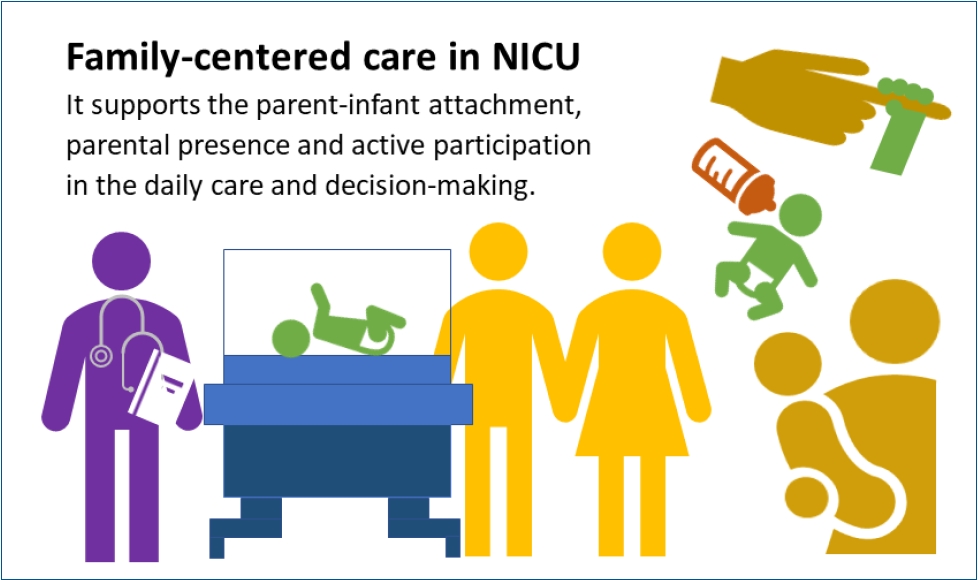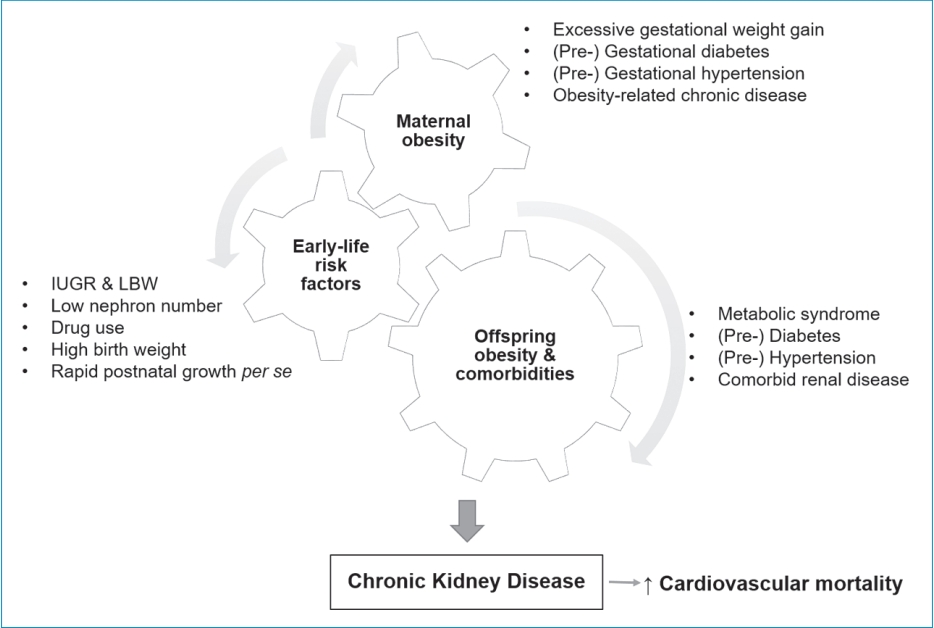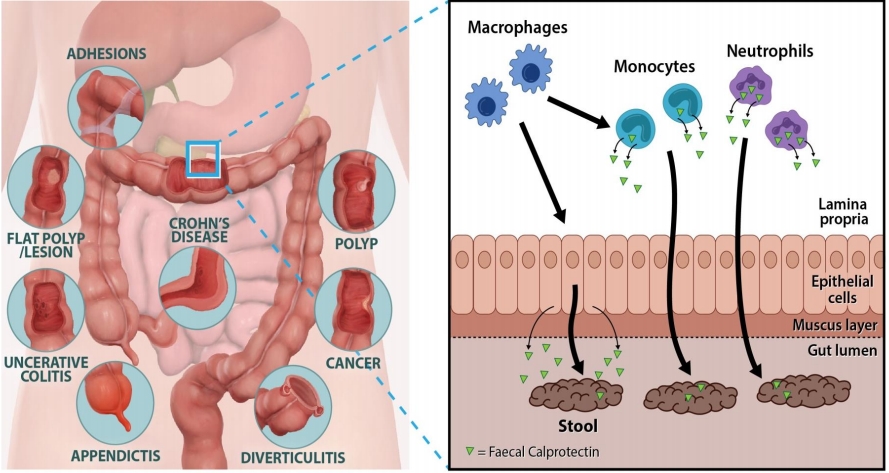Search
- Page Path
-
- HOME
- Search
- Original Article
- General Pediatrics
- The role of serum zinc and selenium levels in etiology of febrile seizures
- Yavuz Ataş, Hatice Gamze Poyrazoğlu
- Clin Exp Pediatr. 2025;68(5):388-394. Published online January 13, 2025
-

Zinc may play a key role in preventing febrile seizures by increasing the seizure threshold and reducing oxidative stress. Incorporating zinc supplements into treatment could help protect children from the adverse effects of febrile seizures and improve their overall outcomes.
- Prognostic role of midregional proadrenomedullin in predicting infection in pediatric cancer with febrile neutropenia
- Seham Ragab, Sara El-Deeb, Ahmed Saeed, Asmaa Mahmoud
-
Background: Febrile neutropenia (FN) remains an important complication of cytotoxic chemotherapy for which an urgent and appropriate evaluation is imperative.
Purpose: To assess the diagnostic and prognostic roles of mid-regional pro-adrenomedullin (MR-ProADM) levels in predicting infection in patients with FN. Methods: This comparative cross-sectional study included 137 patients with chemotherapy-induced FN. Complete blood count, C-reactive protein (CRP), procalcitonin, and MR-ProADM were... -
DOI: https://doi.org/10.3345/cep.2024.01620 [Accepted]
-
- Review Article
- Other
- Microplastic and human health with focus on pediatric well-being: a comprehensive review and call for future studies
- Rogers Wainkwa Chia, Ntegang Venant Atem, Jin-Yong Lee, Jihye Cha
- Clin Exp Pediatr. 2025;68(1):1-15. Published online November 6, 2024
-

· Milk and formula are common sources of microplastic in infants.
· Water and air are the most common sources of microplastic pollution from infancy to adolescence.
· Microplastic use by children of all ages can cause cell damage and affect their health.
· Microplastics present in children can be quantified using a stereomicroscope and characterized using micro- Fourier transform infrared spectroscopy.
- Allergy
- Recent advances in food allergen immunotherapy
- You Hoon Jeon, Edwin H. Kim
- Clin Exp Pediatr. 2024;67(8):386-394. Published online December 7, 2023
-

· To enhance the safety of food allergen immunotherapy, alternative approaches such as sublingual immunotherapy, epicutaneous immunotherapy, low-dose oral immunotherapy (OIT), and omalizumab with OIT are being explored.
· Factors such as causative allergen type, natural outgrowth, symptom severity, and patient age should be considered.
· Individualized food allergen immunotherapy plans should be established to determine the most beneficial treatment for each patient.
- Neonatology (Perinatology)
- Neonatal family-centered care: evidence and practice models
- Juyoung Lee
- Clin Exp Pediatr. 2024;67(4):171-177. Published online June 14, 2023
-

· Concrete evidence exists of early parent-infant attachment supported by family-centered care (FCC) in the neonatal intensive care unit.
· FCC involves the parents’ presence and participation in the infant’s care and decision-making.
· A private and comfortable space should be provided. A single-family room is ideal; however, a quiet space with a recliner can be a good alternative.
· Care culture changes and staff training are required.
- Endocrinology
- Applications of genomic research in pediatric endocrine diseases
- Ja Hye Kim, Jin-Ho Choi
- Clin Exp Pediatr. 2023;66(12):520-530. Published online June 14, 2023
-

· Recent advances in molecular genetics have improved our understanding of pediatric endocrine disorders and are now used in mainstream medical practice.
· Genome-wide association studies can increase our understanding of the biological mechanisms of disease and inform new therapeutic options.
· The identification of founder mutations leads to the efficient localization of the genes underlying Mendelian disorders.
· Next-generation sequencing technologies benefit clinical practice and research of pediatric endocrinology.
- Allergy
- Recent topics on gastrointestinal allergic disorders
- Yoshiyuki Yamada
- Clin Exp Pediatr. 2023;66(6):240-249. Published online January 9, 2023
-

Gastrointestinal (GI) allergies are divided into immunoglobulin E (IgE)-mediated, non-IgE-mediated, and mixed types. In addition to non-IgE-mediated, overlapping eosinophilic GI disorders (EGIDs) have increased in Japan. EGIDs, a mixed-type allergy category, include eosinophilic esophagitis (EoE) and non-EoE EGIDs. The number of EoE cases has increased in Western countries, followed by Asian countries. Recent GI allergies may also be associated with type 2 inflammation.
- Critical Care Medicine
- Ferritin in pediatric critical illness: a scoping review
- Ivy Cerelia Valerie, Anak Agung Sagung Mirah Prabandari, Dyah Kanya Wati
- Clin Exp Pediatr. 2023;66(3):98-109. Published online September 16, 2022
-

The number of studies on ferritin predictive ability in pediatric critical illness has grown exponentially over the past 2 decades. However, among the 66 of 1,580 studies analyzed here, summary statistics for overall and condition-specific studies were only reported in 45.4% and 71.2%, respectively. In contrast, ferritin as a categorical variable with a preset threshold was a significant predictor in 84.6% of studies.
- Nephrology (Genitourinary)
- Obesity and chronic kidney disease: prevalence, mechanism, and management
- Hyung Eun Yim, Kee Hwan Yoo
- Clin Exp Pediatr. 2021;64(10):511-518. Published online April 6, 2021
-

· Obesity is strongly associated with the development and progression of chronic kidney disease.
· Altered renal hemodynamics, metabolic effects, and lipid nephrotoxicity may play a key role in the development of obesity-related kidney disease.
· Children born to obese mothers are at increased risk of developing obesity and chronic kidney disease later in life.
· A multilevel approach is needed to prevent obesity and related chronic diseases.
- Allergy
- Food allergies and food-induced anaphylaxis: role of cofactors
- Meeyong shin
- Clin Exp Pediatr. 2021;64(8):393-399. Published online November 12, 2020
-

Question: What are the roles of cofactors in food allergies and food-induced anaphylaxis?
Finding: Cofactors reportedly play a role in approximately 14%–30% of anaphylactic reactions. Cofactors such as exercise, infection, nonsteroidal anti-inflammatory drugs, dehydration, and alcohol can increase intestinal permeability and antigen uptake, thereby causing allergic symptoms.
Meaning: Routine assessment of the possible involvement of cofactors is essential for the management of patients with food-induced anaphylaxis.
- Gastroenterology
- The role of fecal calprotectin in pediatric disease
- Su Jin Jeong
- Clin Exp Pediatr. 2019;62(8):287-291. Published online March 28, 2019
-

Fecal calprotectin (FC) is a calcium- and zinc-binding protein of the S100 family, mainly expressed by neutrophils and released during inflammation. FC became an increasingly useful tool both for gastroenterologists and for general practitioners for distinguishing inflammatory bowel disease (IBD) from irritable bowel syndrome. Increasing evidences support the use of this biomarker for diagnosis, follow-up and evaluation of response to...
- Case Report
- Genetics and Metabolism
- The first Korean case with Floating-Harbor syndrome with a novel SRCAP mutation diagnosed by targeted exome sequencing
- Eun Mi Choi, Dong Hyun Lee, Seok Jin Kang, Ye Jee Shim, Heung Sik Kim, Jun Sik Kim, Jong In Jeong, Jung-Sook Ha, Ja-Hyun Jang
- Clin Exp Pediatr. 2018;61(12):403-406. Published online September 16, 2018
-

Floating-Harbor syndrome is a rare autosomal dominant genetic disorder associated with SRCAP mutation. To date, approximately 50 cases of Floating-Harbor syndrome have been reported, but none have been reported in Korea yet. Floating-Harbor syndrome is characterized by delayed bony maturation, unique facial features, and language impairment. Here, we present a 6-year-old boy with a triangular face, deep-set protruding eyes, low-set...
- Original Article
- Neonatology (Perinatology)
- Augmentation of respiratory muscle activities in preterm infants with feeding desaturation
- Dong Rak Kwon, Gi Young Park, Ji Eun Jeong, Woo Taek Kim, Eun Joo Lee
- Clin Exp Pediatr. 2018;61(3):78-83. Published online March 19, 2018
-
Purpose Frequent desaturation due to immature incoordination of suck-swallow-breathing in preterm infants can influence multiple organs such as the heart, lungs, and brain, which can then affect growth and development. Most notably in preterm infants, feeding desaturation may even affect pulmonary function during gavage feeding. Because respiratory muscle activities may reflect the work required during respiration, we evaluated the differences in...
- Review Article
- Nutrition
- How to approach feeding difficulties in young children
- Hye Ran Yang
- Clin Exp Pediatr. 2017;60(12):379-384. Published online December 22, 2017
-

Feeding is an interaction between a child and caregiver, and feeding difficulty is an umbrella term encompassing all feeding problems, regardless of etiology, severity, or consequences, while feeding disorder refers to an inability or refusal to eat sufficient quantities or variety of food to maintain adequate nutritional status, leading to substantial consequences, including malnutrition, impaired growth, and possible neurocognitive dysfunction....
- Allergy
- IgE-mediated food allergies in children: prevalence, triggers, and management
- Sooyoung Lee
- Clin Exp Pediatr. 2017;60(4):99-105. Published online April 25, 2017
-

Food allergy (FA) is a serious health problem, and severe FA such as food-induced anaphylaxis can often be life threatening. The incidence of FA has been increasing especially in children. They usually develop early in life and affect up to 10% of children. The 2 most common food allergens worldwide are milk and eggs, while the third one varies depending...
- Case Report
- Immunology
- Familial Mediterranean fever presenting as fever of unknown origin in Korea
- Jun Hee Lee, Jong Hyun Kim, Jung Ok Shim, Kwang Chul Lee, Joo Won Lee, Jung Hwa Lee, Jae Jin Chae
- Clin Exp Pediatr. 2016;59(Suppl 1):S53-S56. Published online November 30, 2016
-
Familial Mediterranean fever (FMF) is the most common Mendelian autoinflammatory disease, characterized by uncontrolled activation of the innate immune system that manifests as recurrent brief fever and polyserositis (e.g., peritonitis, pleuritic, and arthritis). FMF is caused by autosomal recessive mutations of the Mediterranean fever gene,
MEFV which encodes the pyrin protein. Although FMF predominantly affects people from Mediterranean and Middle...
- Neurology
- Two cases of familial cerebral cavernous malformation caused by mutations in the
CCM1 gene - Im-Yong Yang, Mi-Sun Yum, Eun-Hee Kim, Hae-Won Choi, Han-Wook Yoo, Tae-Sung Ko
- Clin Exp Pediatr. 2016;59(6):280-284. Published online June 30, 2016
-
Cerebral cavernous malformation (CCM) is a vascular malformation characterized by abnormally enlarged capillary cavities without any intervening neural tissue. We report 2 cases of familial CCMs diagnosed with the
CCM1 mutation by using a genetic assay. A 5-year-old boy presented with headache, vomiting, and seizure-like movements. Brain magnetic resonance imaging (MRI) revealed multiple CCM lesions in the cerebral hemispheres. Subsequent...
- Original Article
- Neurology
- Epilepsy in children with a history of febrile seizures
- Sang Hyun Lee, Jung Hye Byeon, Gun Ha Kim, Baik-Lin Eun, So-Hee Eun
- Clin Exp Pediatr. 2016;59(2):74-79. Published online February 29, 2016
-
Purpose Febrile seizure, the most common type of pediatric convulsive disorder, is a benign seizure syndrome distinct from epilepsy. However, as epilepsy is also common during childhood, we aimed to identify the prognostic factors that can predict epilepsy in children with febrile seizures
Methods The study comprised 249 children at the Korea University Ansan Hospital who presented with febrile seizures. The relationship between...
- Case Report
- The first pediatric case of tularemia in Korea: manifested with pneumonia and possible infective endocarditis
- Jung Sook Yeom, Kyuyol Rhie, Ji Sook Park, Ji-Hyun Seo, Eun Sil Park, Jae-Young Lim, Chan-Hoo Park, Hyang-Ok Woo, Hee-Shang Youn
- Clin Exp Pediatr. 2015;58(10):398-401. Published online October 21, 2015
-
Tularemia is a potentially severe zoonotic disease caused by
Francisella tularensis . A lack of awareness about tularemia can be embarrassing and could result in delayed treatment because of improper diagnosis. The diagnosis of tularemia is difficult, because the infections are rare and the clinical spectrum is broad. As only 1 adult case has been reported in Korea thus far, pediatricians...
- Original Article
- Diencephalic syndrome: a frequently neglected cause of failure to thrive in infants
- Ahlee Kim, Jin Soo Moon, Hye Ran Yang, Ju Young Chang, Jae Sung Ko, Jeong Kee Seo
- Clin Exp Pediatr. 2015;58(1):28-32. Published online January 31, 2015
-
Purpose Diencephalic syndrome is an uncommon cause of failure to thrive in early childhood that is associated with central nervous system neoplasms in the hypothalamic-optic chiasmatic region. It is characterized by complex signs and symptoms related to hypothalamic dysfunction; such nonspecific clinical features may delay diagnosis of the brain tumor. In this study, we analyzed a series of cases in order...
- Case Report
- Inhaled iloprost for the treatment of patient with Fontan circulation
- Yong Hyun Kim, Moon Hee Chae, Deok Young Choi
- Clin Exp Pediatr. 2014;57(10):461-463. Published online October 31, 2014
-
Decreased exercise capacity after Fontan surgery is relatively common and the failure of the Fontan state gradually increases with age. However, there is no further treatment for patients with Fontan circulation. Pulmonary vasodilation therapy is an effective method to solve this problem because pulmonary vascular resistance is a major factor of the Fontan problem. Inhaled iloprost is a chemically stable...
- Review Article
- Febrile seizures
- Sajun Chung
- Clin Exp Pediatr. 2014;57(9):384-395. Published online September 30, 2014
-
Febrile seizure (FS) is the most common seizure disorder of childhood, and occurs in an age-related manner. FS are classified into simple and complex. FS has a multifactorial inheritance, suggesting that both genetic and environmental factors are causative. Various animal models have elucidated the pathophysiological mechanisms of FS. Risk factors for a first FS are a family history of the...
- Original Article
- Long-term follow-up of Fanconi anemia: clinical manifestation and treatment outcome
- Byung Gyu Yoon, Hee Na Kim, Ui Joung Han, Hae In Jang, Dong Kyun Han, Hee Jo Baek, Tai Ju Hwang, Hoon Kook
- Clin Exp Pediatr. 2014;57(3):125-134. Published online March 31, 2014
-
Purpose The aim of this study was to characterize Korean patients with Fanconi anemia (FA), which is a rare but very challenging genetic disease.
Methods The medical records of 12 FA patients diagnosed at Chonnam National University Hospital from 1991 to 2012 were retrospectively reviewed.
Results The median age at diagnosis was 6.2 years. All patients showed evidence of marrow failure and one or more...
- Case Report
- A novel
PRF1 gene mutation in a fatal neonate case with type 2 familial hemophagocytic lymphohistiocytosis - Jae Yeon Kim, Jeong Hee Shin, Se In Sung, Jin Kyu Kim, Ji Mi Jung, So Yoon Ahn, Eun Sun Kim, Ja-Young Seo, Eun-Sook Kang, Sun-Hee Kim, Hee-Jin Kim, Yun Sil Chang, Won Soon Park
- Clin Exp Pediatr. 2014;57(1):50-53. Published online January 31, 2014
-
Hemophagocytic lymphohistiocytosis (HLH) occurs in the primary form (genetic or familial) or secondary form (acquired). The familial form of HLH (FHL) is a potentially fatal autosomal recessive disorder that occurs because of constitutional defects in cell-mediated cytotoxicity. Here, we report a fatal neonatal case of type 2 FHL (FHL2) that involved a novel frameshift mutation. Clinically, the newborn presented with...
- Original Article
- Early postictal electroencephalography and correlation with clinical findings in children with febrile seizures
- Kyung A Jeong, Myung Hee Han, Eun Hye Lee, Sajun Chung
- Clin Exp Pediatr. 2013;56(12):534-539. Published online December 20, 2013
-
Purpose Electroencephalography (EEG) is frequently ordered for patients with febrile seizures despite its unclear diagnostic value. We evaluated the prevalence of abnormal EEGs, the association between clinical findings and abnormal EEGs, and the predictive value of EEG for the recurrence of febrile seizures.
Methods Data were collected on 230 children who were treated for febrile seizures at Kyung Hee University Medical Center from...
- Review Article
- Food protein-induced proctocolitis: Is this allergic disorder a reality or a phantom in neonates?
- Jin-Bok Hwang, Jeana Hong
- Clin Exp Pediatr. 2013;56(12):514-518. Published online December 20, 2013
-
The etiology of small and fresh rectal bleeding in neonates who are not sick is usually unknown; the only known cause is food protein-induced proctocolitis (FPIPC). It has been recently reported that FPIPC is a rare cause of rectal bleeding in newborns, and most cases have been proved to be due to idiopathic neonatal transient colitis. A recommended strategy for...
- Systemic use of fluoroquinolone in children
- Soo-Han Choi, Eun Young Kim, Yae-Jean Kim
- Clin Exp Pediatr. 2013;56(5):196-201. Published online May 28, 2013
-
Fluoroquinolones are an important class of antibiotics that are widely used in adult patients because of their broad spectrum of activity, good tissue penetration, and oral bioavailability. However, fluoroquinolone use in children is limited because juvenile animals developed arthropathy in previous experiments on fluoroquinolone use. Indications for fluoroquinolone use in patients younger than 18 years, as stated by the U.S....
- Original Article
- Selenium and leptin levels in febrile seizure: a case-control study in children
- Abolfazl Khoshdel, Neda Parvin, Maedeh Abbasi
- Clin Exp Pediatr. 2013;56(2):80-85. Published online February 25, 2013
-
Purpose Febrile seizures (FS) are seizures that occur between the age of 6 and 60 months, but its pathophysiology still is not fully understood. There is limited information about the correlation between levels of selenium and leptin with FS. This study aimed to determine the relationship between serum levels of selenium and leptin in children with FS.
Methods This case-control study was conducted...
- Review Article
- Food allergy
- Youngshin Han, Jihyun Kim, Kangmo Ahn
- Clin Exp Pediatr. 2012;55(5):153-158. Published online May 21, 2012
-
Food allergy is an important public health problem affecting 5% of infants and children in Korea. Food allergy is defined as an immune response triggered by food proteins. Food allergy is highly associated with atopic dermatitis and is one of the most common triggers of potentially fatal anaphylaxis in the community. Sensitization to food allergens can occur in the gastrointestinal...
- Nutritional approach to failure to thrive
- Su Jin Jeong
- Clin Exp Pediatr. 2011;54(7):277-281. Published online July 31, 2011
-
Failure to thrive (FTT) is a term generally used to describe an infant or child whose current weight or rate of weight gains is significantly below that expected of similar children of the same age, sex and ethnicity. It usually describes infants in whom linear growth and head circumference are either not affected, or are affected to a lesser degree...
-

-
-
8.02023CiteScore94th percentilePowered by
-
Impact Factor3.2
-
- TOPICS
- ARTICLE CATEGORY
- Editorial Office
-
Korean Pediatric Society
#1606 Seocho World Officetel, 19 Seoun-ro, Seocho-ku, Seoul 06732, Korea
Tel: +82-2-3473-7306 Fax: +82-2-3473-7307 E-mail: office@e-cep.org
Clinical and Experimental Pediatrics is an open access journal. All articles are distributed under the terms of the Creative Commons Attribution NonCommercial License (http://creativecommons.org/licenses/by-nc/4.0/)
Copyright © 2025 by Korean Pediatric Society.











